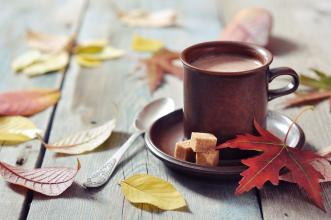Introduction of Colombian Coffee Flavor and Taste characteristics of Colombian Coffee
The eastern mountains have rugged terrain, steep slopes and an altitude of 4000 meters. The climate is affected by different elevations, which makes it show a variety of meteorological zones, resulting in a rich aroma of coffee and moderate acidity. Smooth and consistent with tobacco flavor.
Huila is located in southern Colombia, one of the well-known specialty coffee producing areas, with an altitude of about 1200 to 2020 meters, a planting area of more than 1.3 million hectares and an average temperature of 17 to 23 °C. Because of its outstanding flavor and aroma, it has become a world-famous special coffee. Medium acidity and medium mellow, with charming sweetness and lemon wine acid, and a balanced and pure aftertaste, the northern Sierra Nevada region, which is often selected by major coffee competitions in recent years, is one of the high quality producing areas in Colombia. In the Snow Mountains of Santa Marta, it is one of the few snow mountains on the equator, and its caffeine is famous for its distinctive characteristics and high quality standards. The unique climate, abundant precipitation, cloud cover and shade planting make the coffee here full-bodied and nutty, giving people a unique sensory experience.
The north-central Santander producing area consists of two major geographical areas: the Magdalena Basin and the mountains of the eastern mountains. Magdalena basin is relatively flat, the central plain climate is not only dry and hot, but also won praise for the quality that other coffee can not match. Compared with other producing countries, Colombia is more concerned with developing products and promoting production. It is this, coupled with its superior geographical and climatic conditions, that makes Colombian coffee excellent in quality and delicious and famous all over the world.
Colombian coffee is located in the Andes, where the mild climate, humid air and good rainfall make it very suitable for coffee growth. According to its geographical location, Colombian coffee is divided into three producing areas: northern, central and southern, in which there are six high-quality coffee producing areas in Colombia, Sierra Nevada,Santander, Cauca and Huila. Nari ñ o and Paisaje cultural cafetero Columbia Coffee (Cafe de Colombia) are one of the few individual coffees sold under the name of a country in the world, and they are also successful examples of the successful combination of geographical indications and brand image. In December 2004, the Colombian Coffee producers Association (FNC) applied to the Government of Colombia for registration of the geographical indication "Caf é de Colombia" (Colombian Coffee). Three months later, the Colombian government approved "Caf é de Colombia" as "appellation of origin-geographical indication (D.O.-G.I.)". Therefore, this logo has also become the official symbol of the Colombian Coffee producers Association.

Important Notice :
前街咖啡 FrontStreet Coffee has moved to new addredd:
FrontStreet Coffee Address: 315,Donghua East Road,GuangZhou
Tel:020 38364473
- Prev

Rwanda coffee flavor taste boutique coffee beans introduction to Rwanda coffee producing areas
Unlike Ethiopia, the coffee in Rwanda is mainly round bourbon, which is not as distinctive as Ethiopia and Kenya, but the evenness is excellent. Rwanda has about 33000 hectares of coffee plantations and 500000 people are engaged in the coffee industry. With good natural conditions of high altitude and fertile volcanic soil, the country's fertile soil and suitable climate are conducive to plant growth.
- Next

The flavor and taste of Hawaiian Kona coffee introduces the origin of Hawaiian boutique coffee
Kona coffee has always been grown at home. At first, only men were allowed to work in the coffee garden, and later women joined in. This kind of family production of Hawaiians preferred to rely on the efforts of their families rather than hiring workers to work, so it was normal for Hawaiians to have eight or nine children at that time. Since then, there have been new immigrants from the Philippines and the United States.
Related
- Detailed explanation of Jadeite planting Land in Panamanian Jadeite Manor introduction to the grading system of Jadeite competitive bidding, Red bid, Green bid and Rose Summer
- Story of Coffee planting in Brenka region of Costa Rica Stonehenge Manor anaerobic heavy honey treatment of flavor mouth
- What's on the barrel of Blue Mountain Coffee beans?
- Can American coffee also pull flowers? How to use hot American style to pull out a good-looking pattern?
- Can you make a cold extract with coffee beans? What is the right proportion for cold-extracted coffee formula?
- Indonesian PWN Gold Mandrine Coffee Origin Features Flavor How to Chong? Mandolin coffee is American.
- A brief introduction to the flavor characteristics of Brazilian yellow bourbon coffee beans
- What is the effect of different water quality on the flavor of cold-extracted coffee? What kind of water is best for brewing coffee?
- Why do you think of Rose Summer whenever you mention Panamanian coffee?
- Introduction to the characteristics of authentic blue mountain coffee bean producing areas? What is the CIB Coffee Authority in Jamaica?

